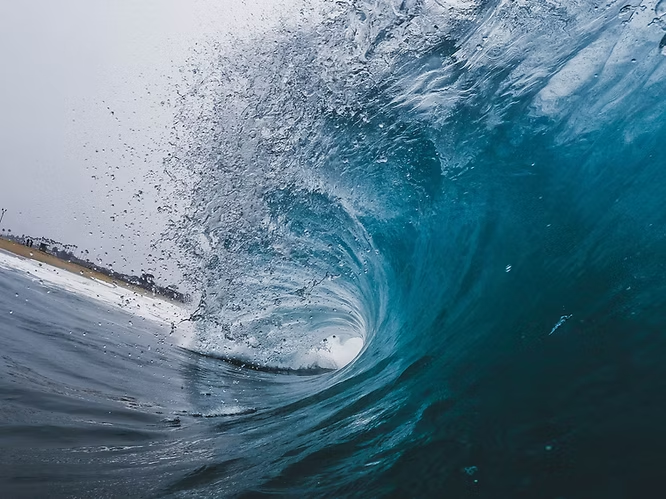The Power and Importance of Ocean Waves
Waves play a vital role in shaping coastal ecosystems and contribute significantly to coastal economies through tourism, particularly by attracting surfers from around the world. Beyond recreation, waves act as powerful forces of nature, transferring energy across vast distances and reshaping shorelines over time.
How Waves Form
Waves are sculpted by wind transferring energy to the water’s surface. Small ripples can grow into swells that travel great distances across the ocean. When these waves reach the shore, they release their energy, influencing coastlines and ecosystems. Waves not only move energy but also play a key role in nutrient cycling and sediment transport, both of which sustain marine habitats.
Waves and Coastal Landscapes
When waves crash against the shore, they can dramatically alter the landscape. Sandbars shift, entire islands migrate, and rocky coastlines are carved by the relentless motion of the ocean. The sheer force of storm-driven waves is even more astonishing. These waves can move massive boulders well above the high-tide line, reshaping coastal terrains in ways previously misunderstood.
For decades, scientists attributed such displaced boulders to past tsunamis. However, a groundbreaking 2018 study in Ireland revealed otherwise. Over one winter season, researchers recorded more than 1,000 boulders being moved solely by storm waves. Among them was a colossal 620-ton boulder—the equivalent weight of 90 African elephants—shifted over eight feet inland. This finding proved that powerful storm waves alone can account for massive geological changes once linked only to tsunamis.
The Anatomy of a Wave
Understanding wave structure provides insight into how they function. A wave is composed of alternating crests and troughs:
- Crest: the highest point of the wave.
- Trough: the lowest point of the wave.
- Wavelength: the distance between two successive crests or troughs.
- Wave period: the time it takes for one full wavelength to pass a fixed point.
- Wave frequency: the number of wave crests passing a point in a set amount of time.
Although waves move visibly across the surface, the water itself barely travels forward. Instead, water particles move in circular motions, rising and falling as the wave passes. This orbital motion explains why energy is transported efficiently across the ocean without displacing vast amounts of water.
Waves as Forces of Nature
From carving coastlines to powering tourism, waves highlight the dynamic relationship between the ocean and human life. They not only shape the natural world but also inspire awe, drawing millions of surfers and beachgoers each year. As climate change intensifies storms and alters ocean conditions, the study of waves becomes even more crucial in understanding and preparing for their lasting impact on both ecosystems and human communities.

